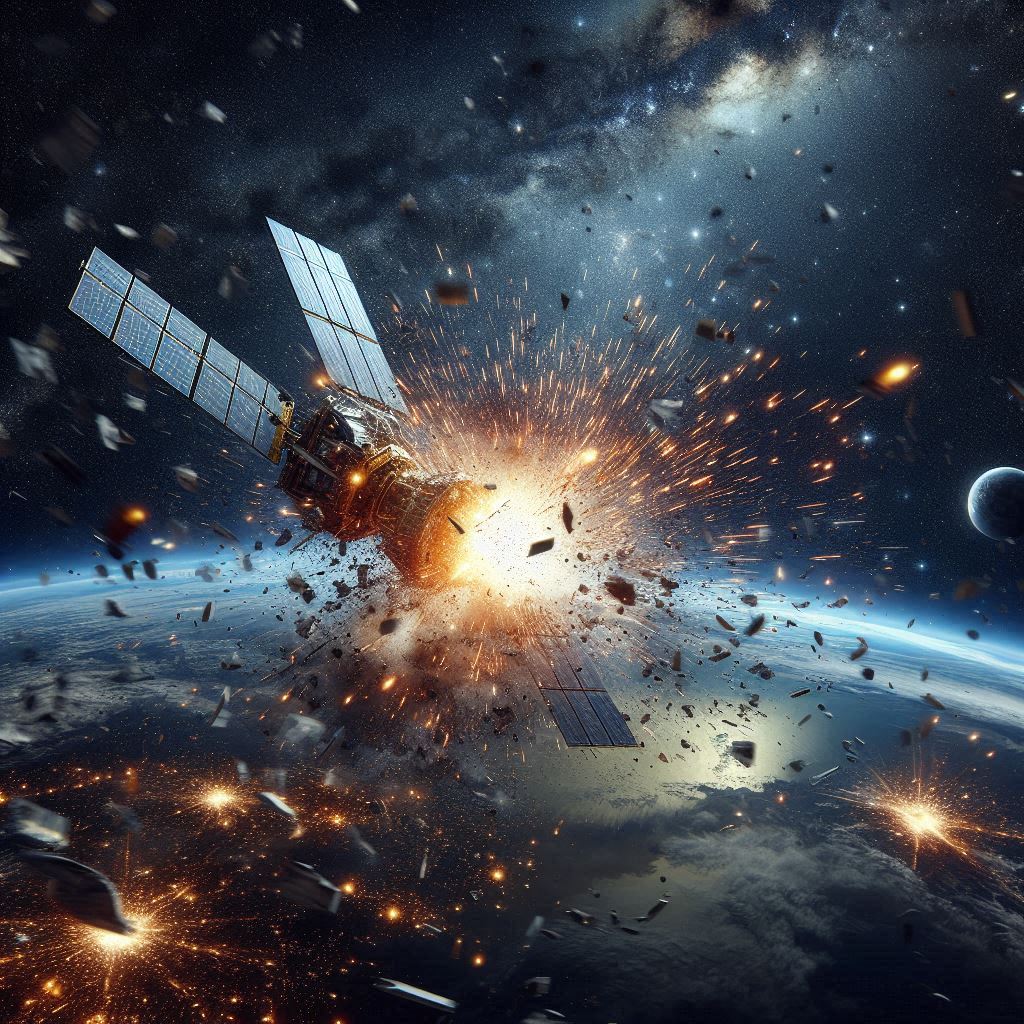Climate change is not only affecting oceans and ecosystems — it is transforming even the space around the Earth. A Massachusetts Institute of Technology (MIT) study has revealed that greenhouse gases shrink the upper atmosphere, reducing its ability to “clean” the orbit of space debris. This could lead to a catastrophic increase in satellite collision risks by as early as 2100. The study was published in the journal Nature Sustainability.

Climate and space connection
The thermosphere, the layer of the atmosphere where satellites and the International Space Station are located, is being depleted by increasing CO₂ emissions. Greenhouse gases, while heating the troposphere (lower layer), simultaneously cool the upper layers. This phenomenon can be compared to a balloon in a freezer: as the temperature drops, it shrinks. In the same way, the thermosphere loses volume, weakening the drag for space debris that stays in orbit longer.
Scientists predict that by the end of the century, atmospheric density in low Earth orbit will decrease by 50-66%. This means that an increase in the number of satellites (there are now over 10,000) will be accompanied by an escalation of risks. “If not acted upon today, a cascade of collisions could render certain orbital zones unusable altogether,” notes William Parker, an author of the study from MIT.
Scenarios of the future
Greenhouse gases have a double effect:
- Warm the troposphere, trapping heat near the Earth’s surface.
- Radiate heat from the upper layers into space, cooling the thermosphere.
This leads to compression of the thermosphere and a decrease in its density. The less resistance the atmosphere creates, the slower the debris burns. For example, an old satellite that used to disappear in a few years may now drift for decades, threatening other functioning vehicles.
Scientists have analyzed several models of developments up to the year 2100:
- Stable emissions (2000 level) — little change.
- High emissions — critical reduction in thermospheric density.
In the second case, the orbital “capacity” of low-Earth orbit would drop by half, and the amount of space debris would rapidly increase. This would create a snowball effect: each collision would generate new debris, increasing the probability of the next crashes.
Why is this important now?
The space industry is growing rapidly, with a 35% increase in the number of active satellites in 2023 alone. However, the growth of satellite launches (more satellites have been launched in the last 5 years than in the previous 60) is not accompanied by adequate orbit cleaning mechanisms.
“We must determine if the current path is sustainable,” Parker notes. “Without intervention, cascading collisions will become inevitable.”
The researchers call for several measures to be taken:
- Limit the number of satellite launches.
- Develop debris removal systems (e.g., space “tugs”).
- Consider climate change in mission planning.
Space is no longer “limitless” — its resources also have limits. And if the approach is not changed today, in a few decades low orbit could become a death trap for satellites.
Earlier we reported on whether global warming really exists.
According to gizmodo.com


